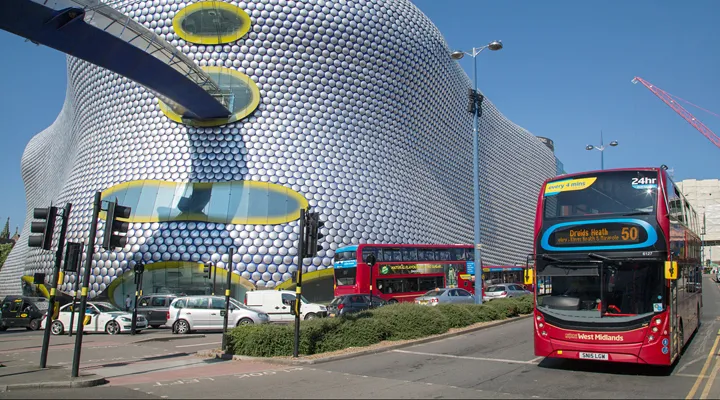As an alternative to installing a significant volume of batteries into an electric bus, opportunity charging “can make smarter use of the planet’s precious resources while slashing running costs,” says Co-Founder and CEO of battery-electric bus retrofit start-up Kleanbus Joe Tighe in the following opinion piece.
Operating in our cities almost every day of the year, there is generally only one occasion outside Christmas when you won’t see a bus in the centre of those areas. That is when streets are given over to an annual marathon.
Any bus builder or operator who ventures out to watch such a race could learn from the athletes, particularly if they pay attention to their ‘refuelling strategies’. Marathon runners need to stay hydrated, particularly during hot summer weather. And yet, we don’t see them lining up at the start with huge bottles in their hands. Instead, they grab a quick drink at a water station when they need it, and power on.
It doesn’t make sense for the runners to carry the extra weight of water bottles when they don’t need to. And, if you think further, it doesn’t make sense for an electric bus to drive in circles in a city with a large battery onboard when they don’t need to.
Using on-route resonant magnetic inductive charging, a battery-electric bus can receive a swift top-up at key stops while letting passengers off and on. Following a similar refuelling strategy to a marathon runner, such an electric bus can seamlessly carry out its complete duty cycle without needing to return to the depot to plug in.
This approach brings a raft of benefits, the main advantage being the fitment of more compact, lighter and less expensive batteries. Currently, most electric buses need to be equipped with a 400-500kW/h battery to enable them to cover a typical 150–200-mile duty cycle without the need to return to the depot to charge.

That is getting on for half a megawatt of energy and three tonnes of battery cells.
On-route charging infrastructure would mean that the average electric bus would need a battery of only one-third of that size – around a tonne in weight.
As the most expensive component of an electric bus is the battery, reducing its size has the same impact on the overall vehicle cost.
And that is equally applicable whether we are talking about a brand-new electric bus, or a diesel example converted to battery-electric power by a company such as Kleanbus. In addition, fitting a smaller battery pack enables engineers to optimise the weight and distribution of the energy storage within the bus, and less vehicle weight helps to improve range.
There are also clear environmental benefits at the source and in the distribution and supply chains of the raw materials required for the battery, and in the locale in which the bus is operated. Less lithium needs to be mined and transported across the globe from countries and regions such as Australia, China and Latin America. Less vehicle weight results in lower tyre wear, reducing particulate emissions and leading to cleaner air on our streets.
What is more, on-route charging requires little behavioural change. Bus drivers carry on as they have done before, but may have slight delays in route timings.
In the United States, leading technology company Momentum Dynamics has developed a solution that makes clean, highly efficient, resonant magnetic inductive charging between ground-mounted transmission pads and receiving equipment on the undersides of bus floors a reality. Momentum Dynamics began commercialising fully automated indictive wireless charging for electric vehicles in 2014.
Currently operating a successful bus fleet trial in the US city of Wenatchee, Washington, the company has proven inductive charging to be more efficient than traditional plug-in conductive charging. Once installed, the charging pads are virtually entirely maintenance-free.
As well as partners in the automotive space such as Volvo Cars, Kleanbus is delighted to be working with Momentum Dynamics. On-route charging lends itself to repowered buses. While our engineers can certainly install large battery packs into a converted bus, using fewer packs is a more efficient and cost-effective solution and one that makes the most sense for operators.
Whether the vehicle is a taxi or a bus, choosing to charge ‘on the go’ using inductive technology means that less time needs to be spent back at the depot charging, and less expense is incurred installing higher kW charging capability at base, too.
And it also means that, like any good marathon runner, an electric bus can run the total distance, finishing its duty cycle as strongly as it started.





